This is a Cantonese restaurant classic that always appears in wedding and birthday banquets! The good news is, it is actually very simple to recreate this dish at home! Either raw or cooked lobster will do. I know it is difficult to get proper Yimin noodles outside of East Asia, so I have even proposed an alternative!
What is Longhayimin 龍蝦伊麵?
The long name of this dish is “Seongtong Longha Wuiyimin” 上湯龍蝦燴伊麵. The Cantonese Chinese name literally means “Yimin noodles with lobster braised in stock“. As this is a rather long name, the dish is often call “Longhayimin” 龍蝦伊麵 – “Lobster Yimin“.
As lobster is a premium product, the dish is often featured on banquet menus. If you do not have access to lobsters, try using really big prawns instead.
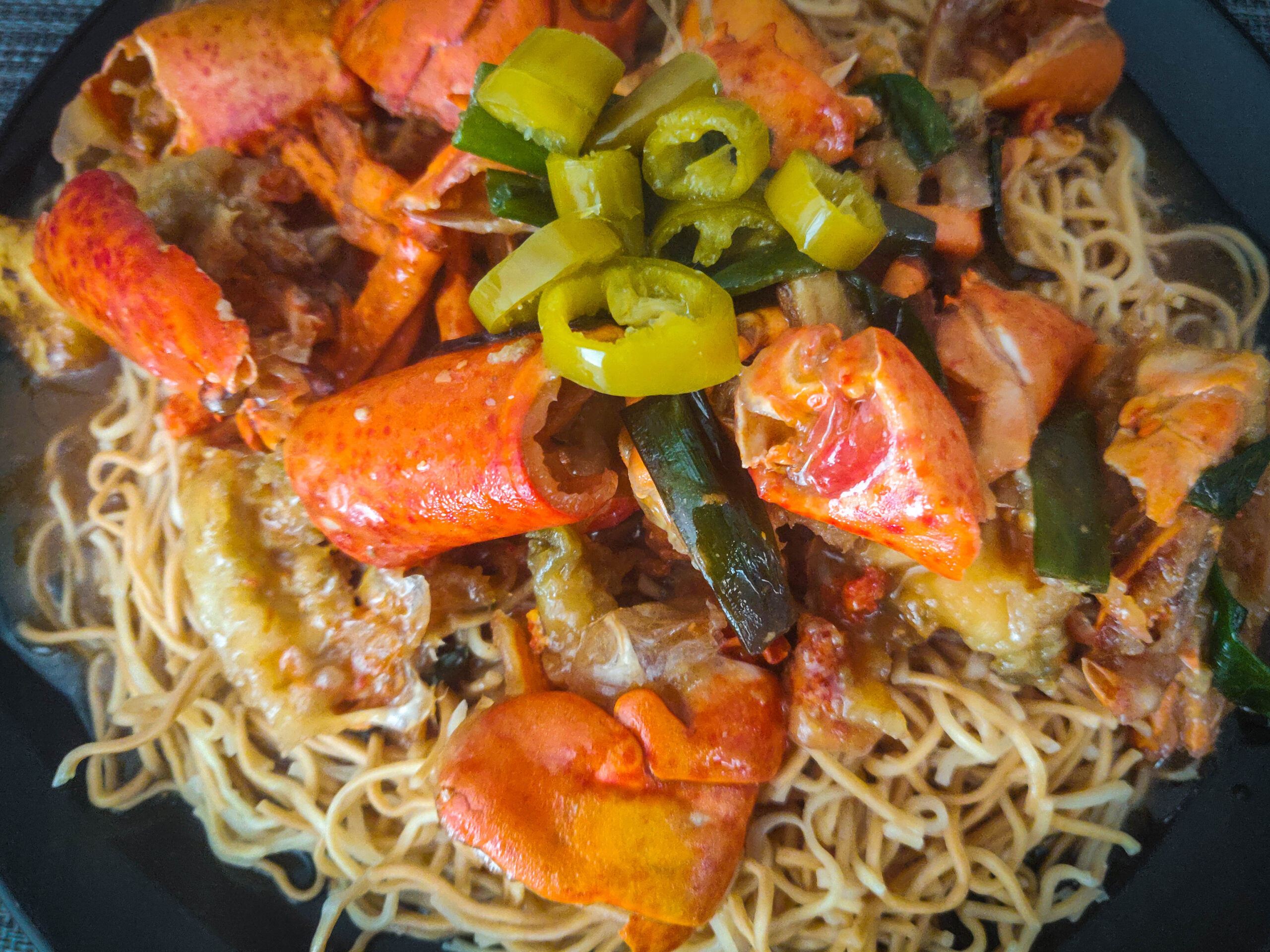

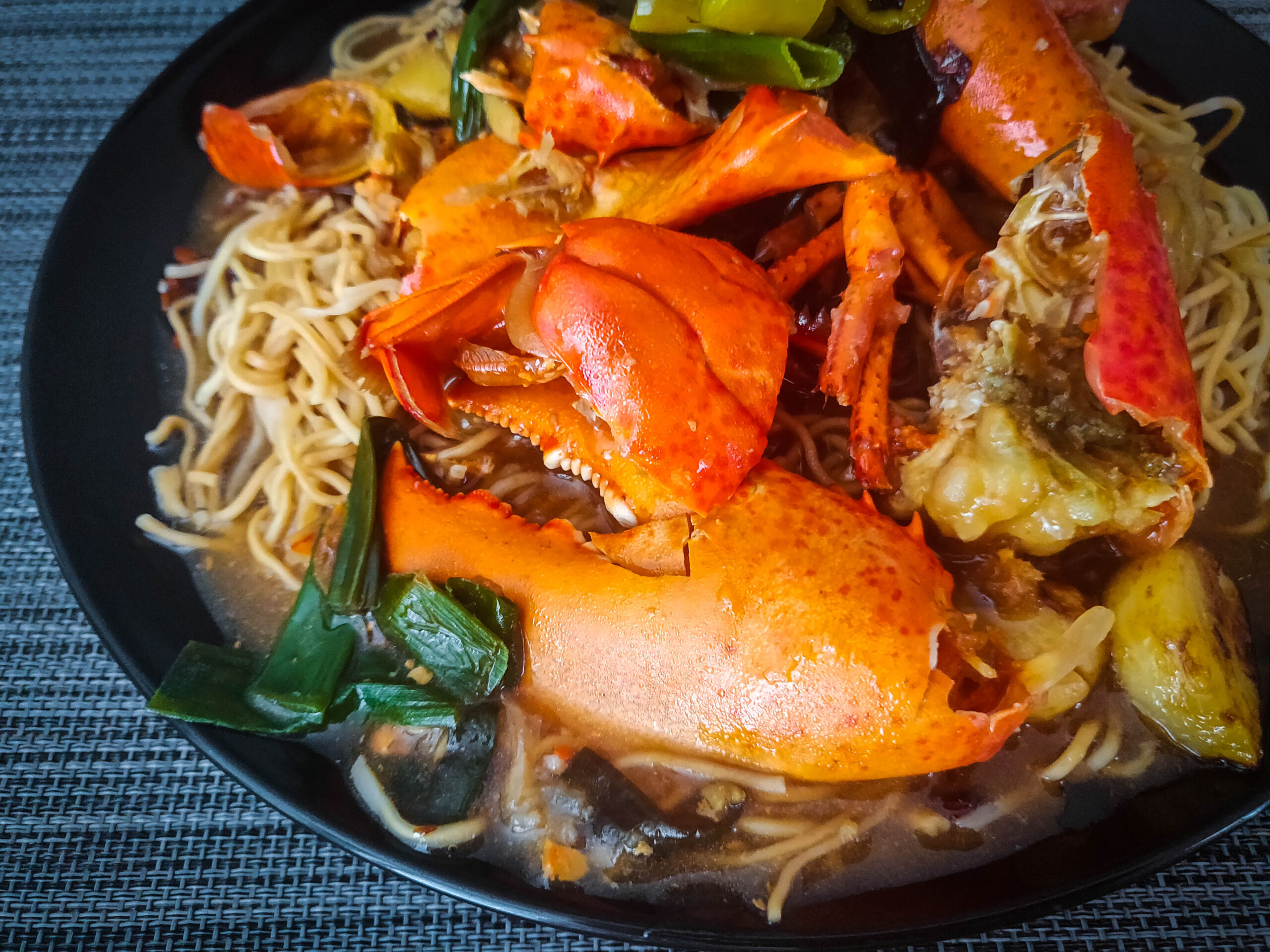
What is Yimin 伊麵 and what are its alternatives?
Yimin 伊麵 is the precursor to the modern day instant noodles. Originally called “Yifumin” 伊府麵 – literally “The Noodles of Residence Yi”, its origin can be traced to a real person. I have detailed the origins of these noodles in this post!
As I have explained in the post, there are two types of Yimin 伊麵:
- The original yellow Cantonese Yimin 伊麵 from Hongkong made with egg yolk
- The brown Singaporean Yimin 伊麵 made with alkaline ash
As I am from Singapore, I prefer the Singaporean version because it has a specific taste.
Now living in Belgium, I have difficulties finding either versions for several reasons:
- Commercial Yimin such as the one by the Peach brand in Hongkong are air-dried and not deep-fried
- Deep-fried noodles are not made with egg yolk but with turmeric
It is until when I discovered Pancit Canton from the Philippines! In fact, Pancit Canton IS the Chinese Cantonese Yimin!!
What is the origin of the Filipino noodles Pancit?
As the Chinese diaspora in the Philippines is primarily that of a Hokkien/Minnan diaspora from Fujian in southeastern coast of China, the Chinese immigrant spoke Chinese Minnan language.
The word “pancit” comes from the Hokkien words “bian sit” 便食, meaning “convenient food“. By bringing over the Cantonese ‘instant noodles’ to the Philippines, the Minnan immigrants popularised the use of pre-cooked noodles as a form of quick meal.
As eggs are expensive, to recreate the chewy firm texture of noodles, one can also use lye water such as in Japanese ramen. One way of creating lye water is to pass water through burnt ash, and the result is alkaline ash water.
This is the reason why Singaporean Yimin is brown in colour and not yellow.
For this reason, go for “Pancit Canton” if you want Hong Kong style Yimin, and for Singaporean style Yimin, go for “Pancit Hab-Hab“.
An important note about this recipe
The deep-frying of lobster is necessary to ensure that:
- the meat does not leak or turn soggy
- the shells release their flavours
- some crunch is added to the resulting dish


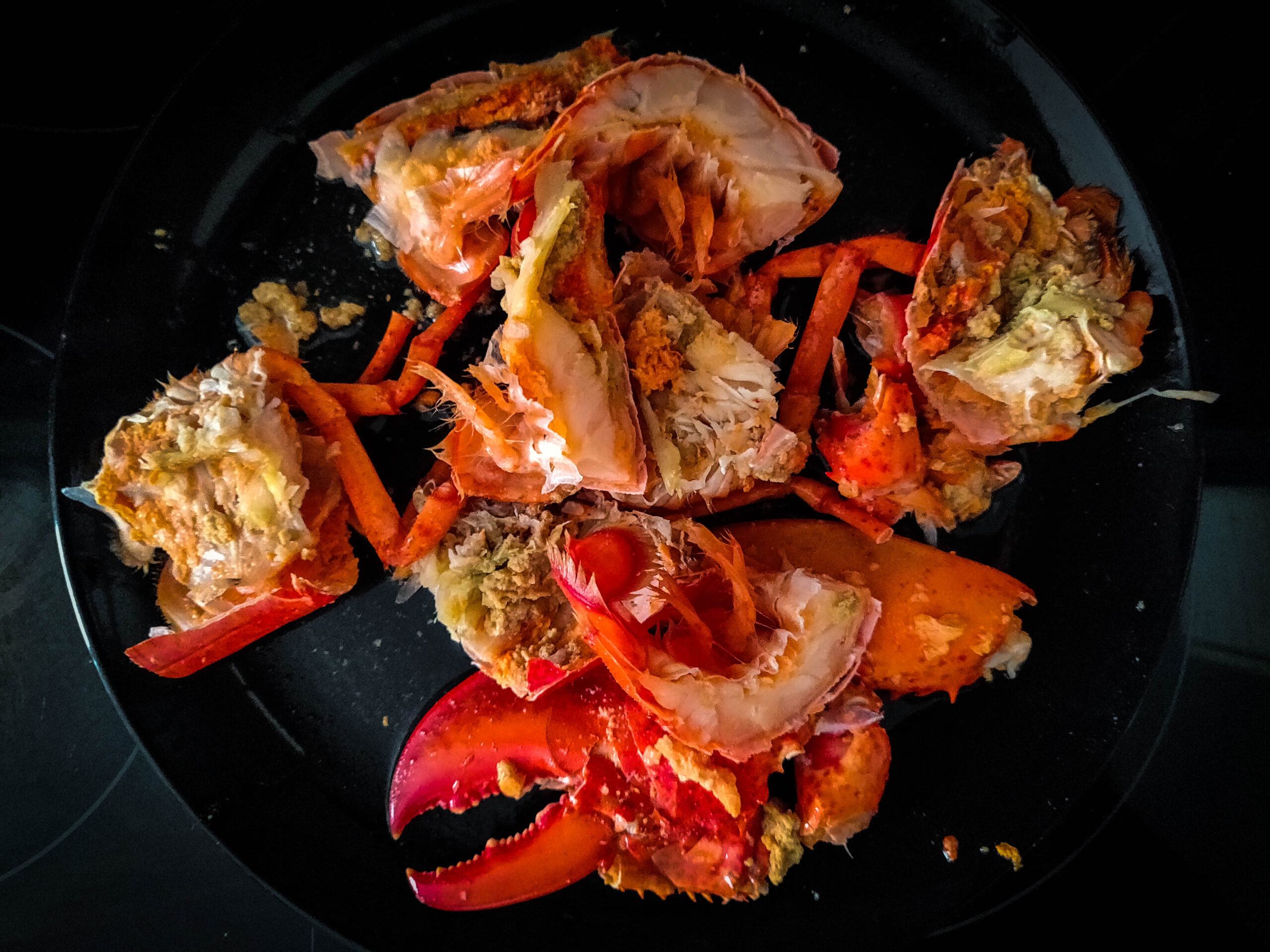


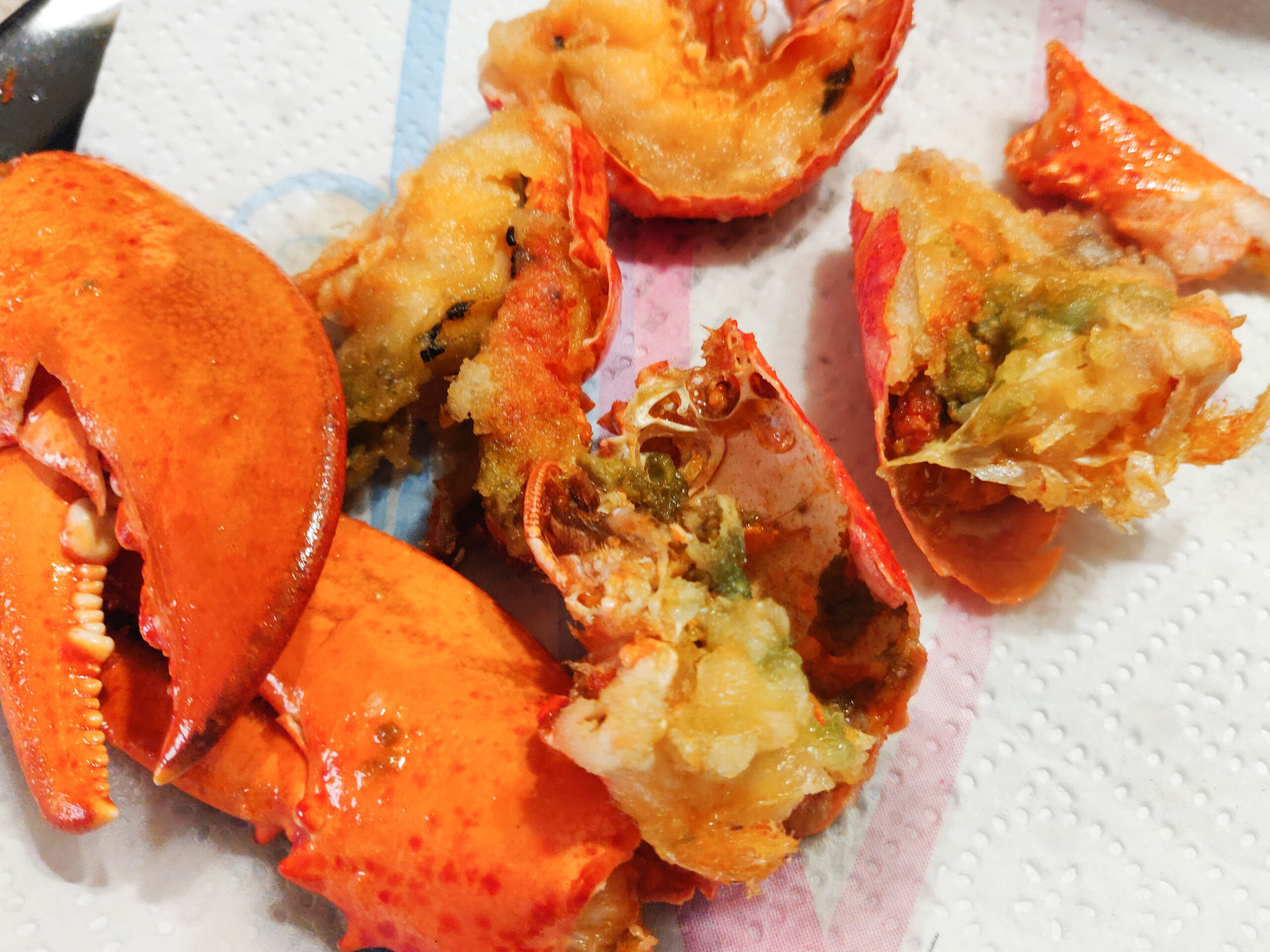

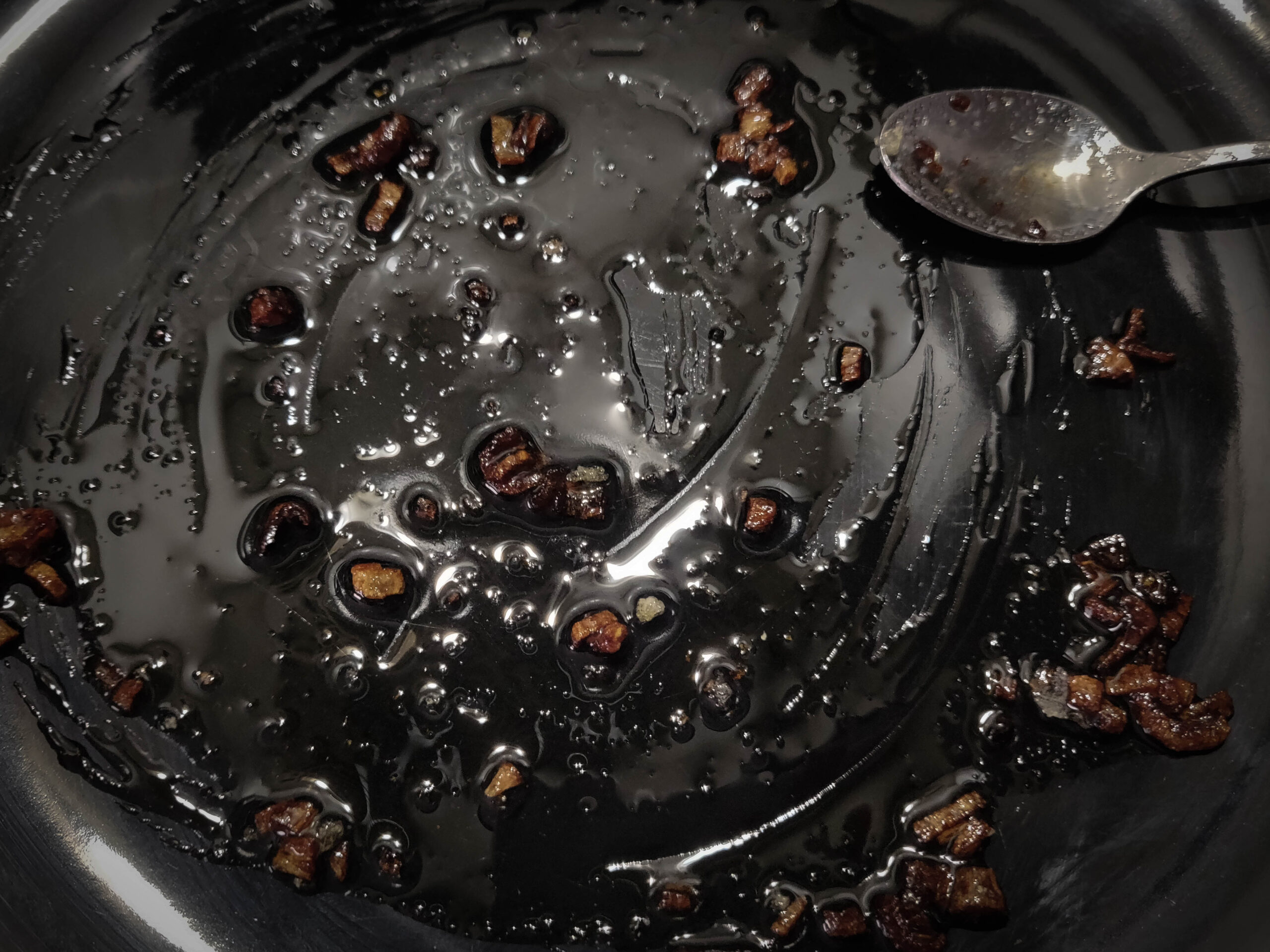
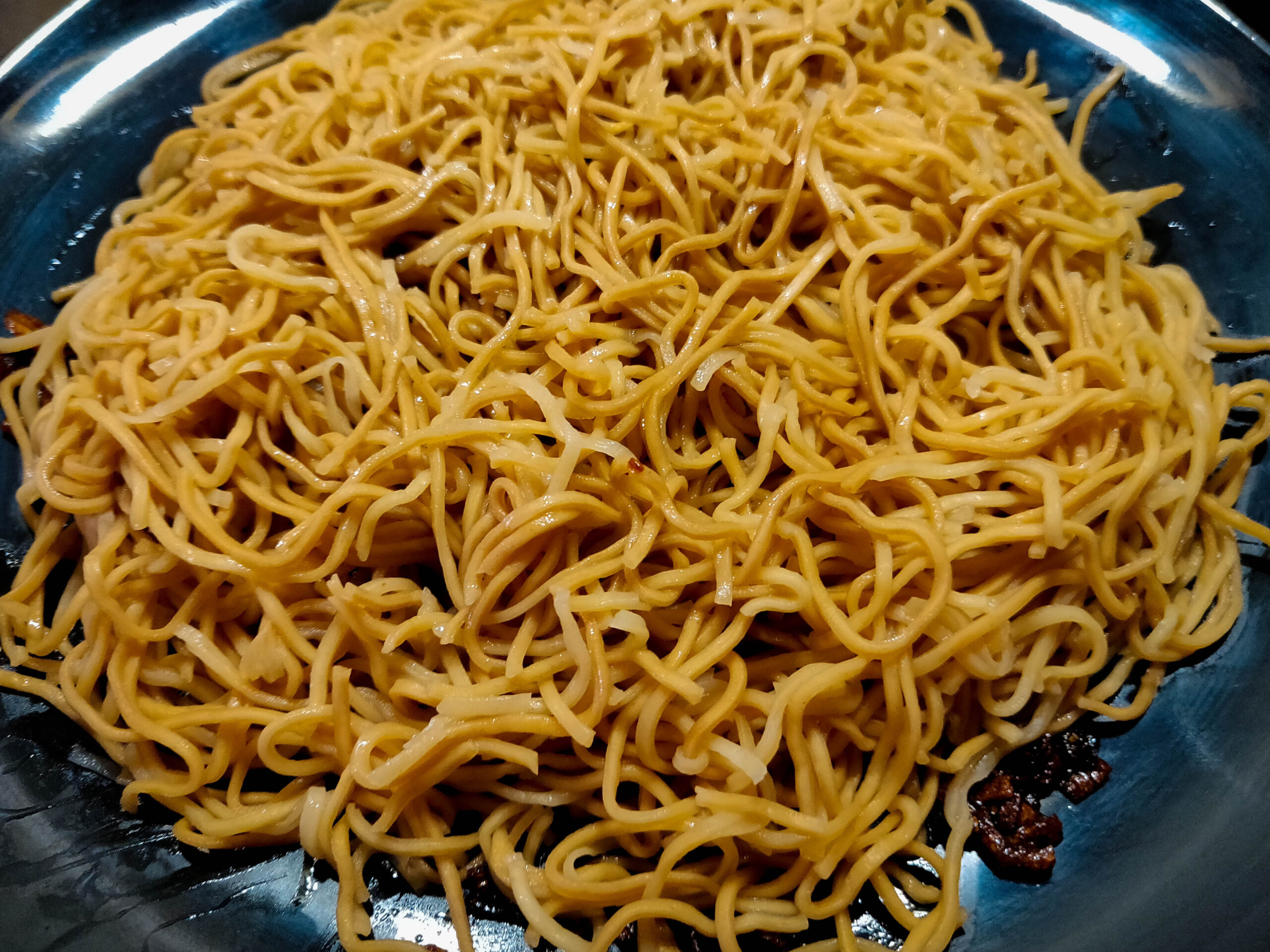
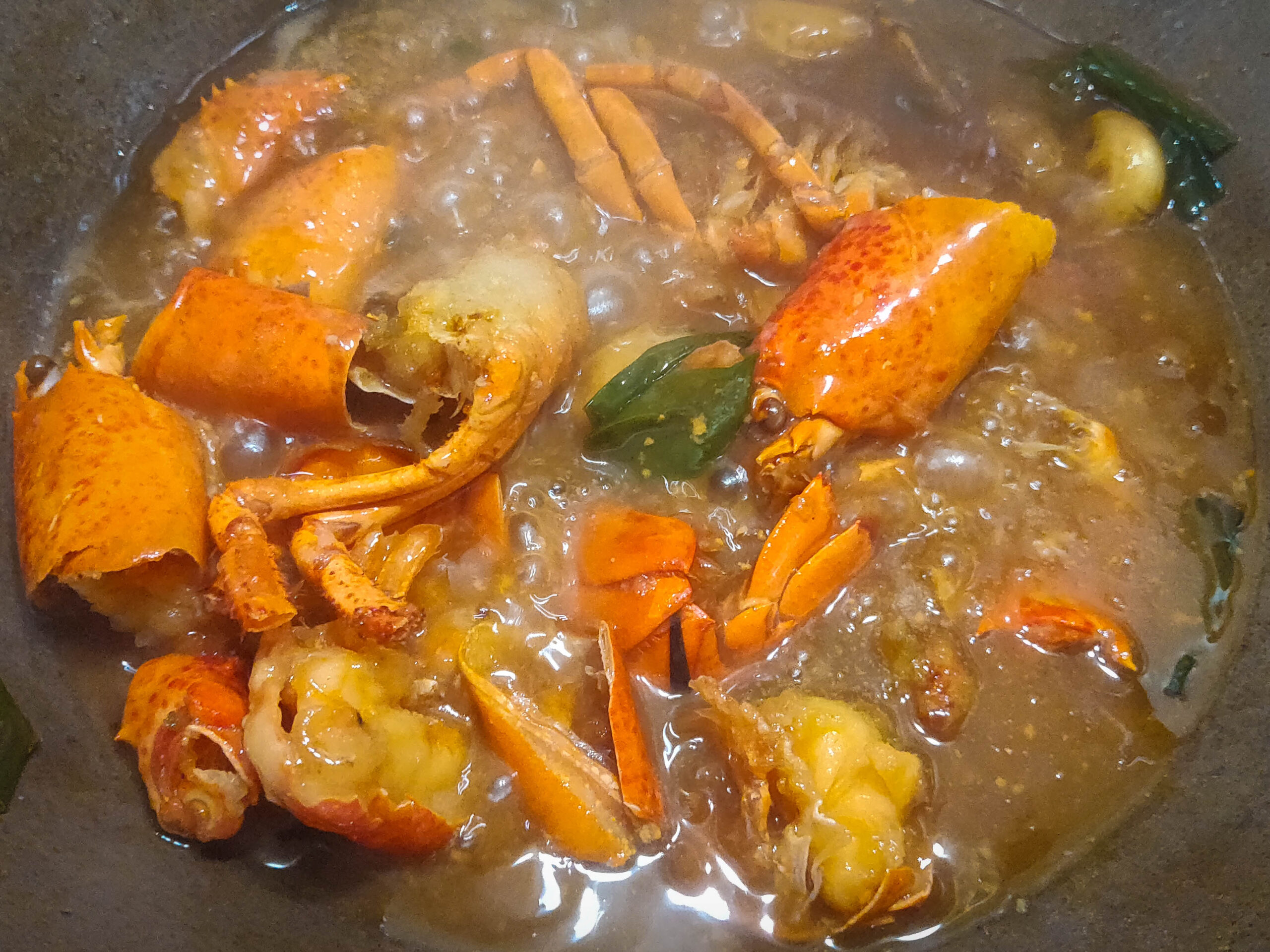

Ingredients:
- Medium-sized cooked or raw lobster around 500g
- 5 cloves garlic, peeled
- 5 stalks spring onions, sectioned at 5cm
- 3cm aged ginger, peeled and sliced
- 250ml chicken stock, or 250ml water with 1 tsp chicken powder
- 1 tbs light soy sauce
- 1 tbs oyster sauce
- 200ml Shaoxing rice wine
- 2 tbs corn starch
- 1 portion of dried Yimin 伊麵
- Vegetable oil
- Salt and pepper to taste
- Homemade shallot oil (optional)
Serving: 2 persons
Instructions:
- Dry your lobster. Halve it down the middle then cut it into large chunks. Marinate with soy sauce, oyster sauce on a plate and set aside. Add sufficient oil into your wok for deep frying. Meanwhile place in a small bowl some corn starch. Rub and cover the flesh side of your lobster chunks with some corn starch. Do not worry if there is some lobster liquid on your plate. Once the oil reaches 160 degrees Celsius, deep fry your lobster chunks until golden by batches. Lay the fried lobster chunks on some kitchen paper. Once done, turn off the fire. The remnants of the lobster liquid on the plate can be poured into the bowl of the rest of the corn starch for later use.
- Pour away your frying oil except for about 2 tablespoonful of it in the wok. Set aside.
- In a small pot, bring to boil some water to cook the Yimin noodles. Once they are al dente after 5 minutes, drain in a sieve. On your serving plate, oil it with a bit of homemade shallot oil. If not, just a bit of cooking oil will also do to prevent the cooked Yimin noodles to stick to the plate. Pour your noodles onto your serving plate and set it aside.
- Set your wok on high heat and stir-fry the garlic, then add the ginger, then the spring onions. Add in the lobster chunks. Add your chicken stock and Shaoxing rice wine. Once it’s boiling, cover the wok and let it simmer on medium heat for 3 minutes.
- Bring your wok back to high heat then slowly stir in your corn starch mixture to thicken the sauce. Once it reaches the right sticky and glossy consistency, turn off the heat immediately and pour the thick gravy over the noodles.
- Serve immediately piping hot.
Hope you enjoy this marvellous and delicious Cantonese dish! If you have any question, feel free to write to me. If you have any requests for recipes, do also let me know!


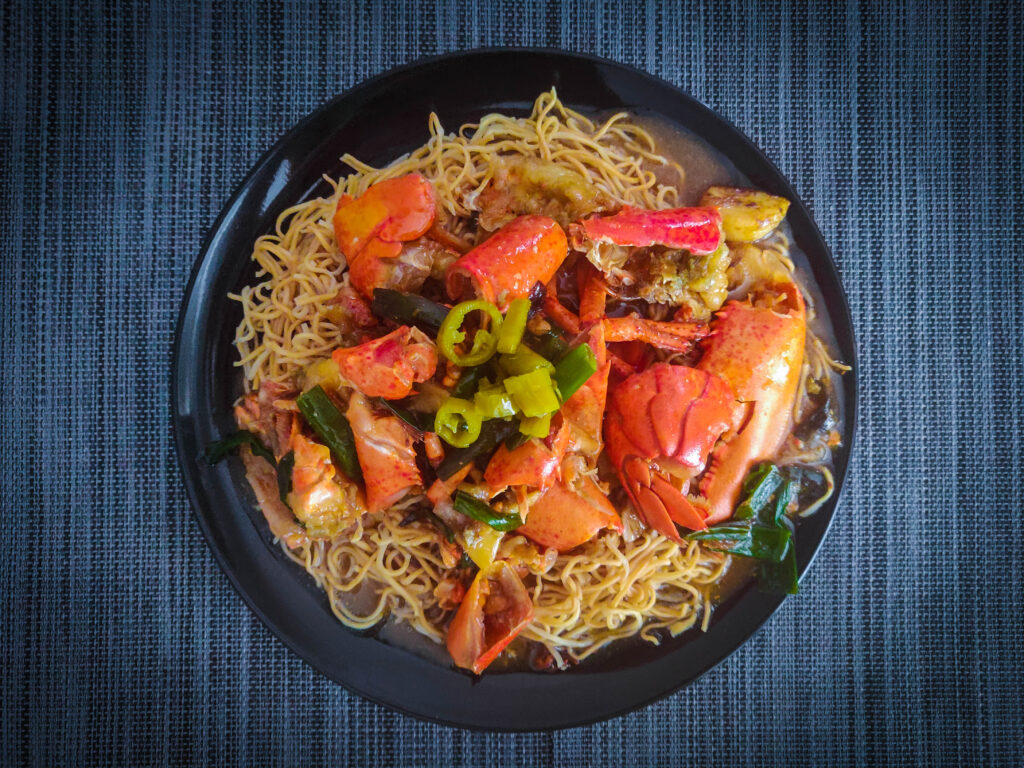

1 Comment